Expert Series: Professor John Seymour
Between 20-30% of patients with chronic lymphocytic leukaemia (CLL) “will never require treatment for the remainder of their natural life” – a key statistic, according to Professor John Seymour AM.
And it’s why the clinical haematologist and Director of the Department of Haematology at the Peter MacCallum Centre and Royal Melbourne Hospital sees ‘watch and wait’ as a “very significant positive opportunity for patients”, rather than a negative.
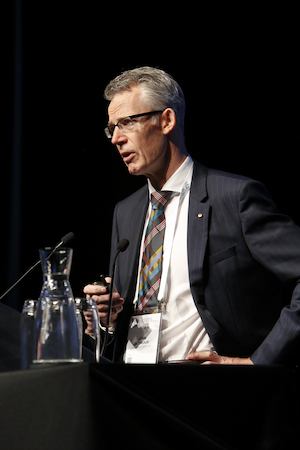
Observing and optimising general wellbeing
During his first few consultations with newly diagnosed patients, Prof. Seymour says it’s important “to convey an understanding of the nature of their disease, the reasons why watch and wait is being recommended, and empowering them to understand the opportunities this provides for them”.
“That is really critical,” explained Prof. Seymour.
“Information and understanding is power, and the more patients understand why this is being recommended the better.”
Taking a step back, he refers to “a headline issue” and that is, “no therapeutic intervention, be it chemotherapy, immunotherapy or targeted treatment, has been shown to deliver meaningful benefits if begun early, while patients have got stable, low volume, asymptomatic disease”.
In other words, there is no proven benefit for a CLL patient to start treatment early.
“All those interventions are associated with burdens and risks, and while our targeted treatments are certainly better tolerated than chemoimmunotherapy, they are not free from side effects,” Prof. Seymour explained.
“Early intervention actually adds to the symptom burden for the vast majority of patients.
“And there are many, many patients, and depending upon their age and other illnesses (comorbidities) – as many as 20% to 30% of patients who have a diagnosis of CLL – who will never require treatment.
“So if we were to intervene early, we would be imposing the burdens of treatment on nearly one third of patients who otherwise would never have required it.”
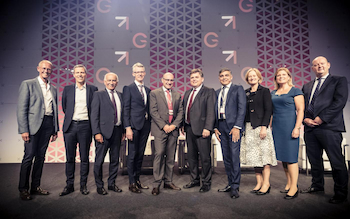
Another consideration are the treatment advances that come from research, and Prof. Seymour uses the analogy of buying a TV set today with its 2022 technology, compared to the TV bought in 10 years that would be much better and more cost effective.
“In many patients, it might be three, five, eight or 10 years until they need to begin treatment,” he said.
“While our treatments for CLL are not improving at the same rate as the technology of television sets, what will be available in the future will be better, will be more effective, and will be better tolerated than what we have today.
“So beginning treatment early locks us into the drawbacks of our current-day technologies in terms of treatment.”
And, in recognising that CLL is often present for many years before treatment is needed, “this provides a wonderful window of opportunity for patients – to take a step back, look at their lifestyle, their diet, whether they’re smoking, or their intake of alcohol is excessive”.
“There is the ability to look at and improve their general health, their general wellbeing, so if or when treatment is needed in the future, they’re actually in a much more physically, nutritionally, and psychologically robust state to be able to then deal with that at that time,” said Prof. Seymour.
“Watch and wait implies a degree of passivity that I see as inaccurate and inappropriate.”
“I see that period of observation and optimisation of general wellbeing before, or until treatment might be required, as a wonderful opportunity for patients – one many patients with haematologic malignancies are not afforded.”
CLL is typically a chronic rather than imminently life-threatening disease
Prof. Seymour said the most critical issue in early discussions around CLL is reassuring the patient.
“When they hear the word leukaemia, the general, public perception is framed around an aggressive, rapidly progressive, potentially imminently fatal disease that needs intensive treatment, from their understanding of childhood leukaemia,” he said.
“So the first issue is reorienting – emphasising the chronic element of the disease for many patients.
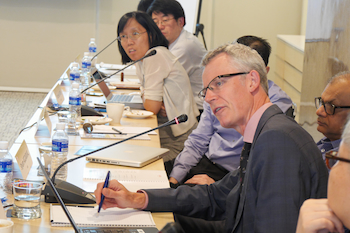
“There’s a very wide variability in how a person’s disease behaves, but in a typical situation it’s reframing and getting them to be comfortable and to understand that this is a chronic health issue rather than an imminently life-threatening one.
“Then, the second is talking about the potential implications of this on their health. For many people, CLL is picked up at a very early stage and neither requires immediate treatment nor currently has profound impacts on their health,” said Prof. Seymour.
This involves guiding them about the things to be aware of – increased risk of infection, benefits of vaccination, increased risk of some other forms of cancer particularly skin cancers and the benefits of avoiding excessive sun exposure, and early detection of those cancers.
“And then, the opportunity for making lifestyle modifications around diet, exercise, alcohol, and tobacco that will enable and empower them to improve their general health, as well as giving them a sense of a degree of control that the healthier they are, the greater the capacity they have to cope with their disease into the future, and to manage and deal with whatever therapies may be required in the years to come.”
Alleviating anxiety and distress
In Prof. Seymour’s experience, a thorough understanding of the nature of CLL, the reasons why treatment is not recommended, and empowering patients with the ability to monitor and inform their treatment team of emerging issues, gives patients the tools to alleviate anxiety and distress.
“At times we will have input from clinical psychologists, social workers, clinical nurse consultants, and patient support groups, but generally I find information, understanding, and an open and bilaterally respectful relationship between the haematologist and the patient greatly diminishes those initial anxieties and concerns,” he said.
How and why Prof. Seymour chose CLL
Prof. Seymour specialised in CLL for three broad reasons.
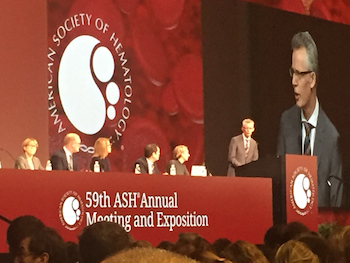
The first was that during his training and early fellowship, he spent time at the MD Anderson Cancer Center at Houston, Texas where he was mentored by an expat Australian professor, Michael Keating.
“He is a very charismatic, insightful, intelligent, dynamic person, and he was, and is, working in the CLL area. His influence guided me to recognise the depth and potential of research in CLL back in the early 90s,” said Prof. Seymour.
“The second thing that really attracts me to CLL is the long-term relationship you build up with your patients, and for many of my patients, I’ve been on their journey with them for over 20 years.
“The closeness of that relationship, the ability to truly understand their personal values and goals, and the time to be able to share and instil an understanding of the nature of the disease, its treatment, and the critical importance of taking a long-term view, and sequencing treatment, is very, very appealing to me.
“The third element is a local one – understanding the fascinating biology of CLL and development of some of the most effective recent breakthroughs in treatment, generated from a broad team of researchers here in Melbourne, particularly David Huang and Andrew Roberts based at the Walter and Eliza Hall Institute.
“The ability to collaborate with them and many other colleagues through the Australasian Leukaemia & Lymphoma Group, and other excellent clinicians in the CLL space in Australia, has really reinforced that.”
Current unmet needs in CLL
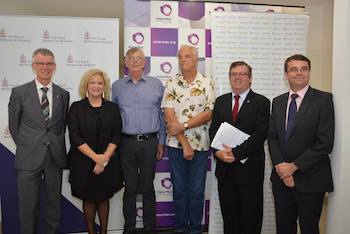
Prof. Seymour said there were a few demanding issues in the CLL space.
“We do not have a good understanding of the causes of CLL and hence we have no ability currently to guide people in preventative measures. It would be much, much better if we could prevent CLL occurring rather than treat it once it occurs,” he said.
“So a huge unmet need is understanding the cause, and using that to develop preventative strategies.
“The second is that for the majority of patients, we don’t have curative therapy, and that is clearly a high priority. We have many effective treatments and for many people, this is a very manageable disease.
“The third is that in recent years we’ve developed many very effective, new targeted therapies and most of the experience with those is as single agents, using them on their own.
“A real challenge is to understand and develop the most effective ways to use those tools together, maybe in combination, hopefully with curative intent. The other alternative is how to use them in sequence and what the optimal duration of treatment with each of those agents may be.
Latest developments in CLL research
The entire field of CLL research has been “hugely accelerated” by the development of, and recognition of the effectiveness of, new classes of targeted therapies, said Prof. Seymour.
“A drug class, called the BTK inhibitors, with drugs like ibrutinib (Imbruvica®) and acalabrutinib (Calquence®), zanubrutinib (Brukinsa®), and pirtobrutinib (formerly known as LOXO-305) are very, very effective.
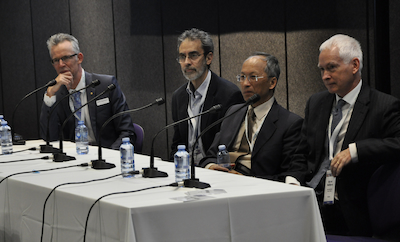
“Then close to my heart, and developed here in Melbourne, is a class of a group of drugs, called BH3 mimetics, and venetoclax (Venclexta®) is the first of those drugs.
“And a third class of drugs, targeting the PI3 kinase, are non-chemotherapy agents that have been developed such as idelalisib (Zydelig®) and duvelisib (Copiktra®).
“So a huge domain of research activity is around the optimal way to use those, in combinations with antibodies, in combinations together, and learning which particular patients may most benefit from those particular drug classes, and learning how the CLL becomes resistant to those classes of drugs, so that we can then develop adaptive therapies to circumvent that resistance pattern,” explained Prof. Seymour.
The second sphere of research is in minimal residual testing which uses very sensitive techniques to detect tiny amounts of CLL, down to one cell in 10,000, or 100,000, or 1 million. This probes the depth of remission achieved with treatment.
“We use that exquisitely sensitive method to inform how best to use the treatment,” he said.
“And the third really exciting domain, which is at the beginning of development in CLL compared to other diseases, is the potential for immune therapy, particularly cellular immune therapies, such as CAR T-cell therapy to try and treat and potentially eradicate CLL.”
Availability of targeted therapies for CLL in Australia
Prof. Seymour said all classes of targeted agents had been approved in Australia for people with CLL, but “not all of the drugs within each class”.
The PI3 kinase inhibitor, idelalisib, is approved; the BTK inhibitors, ibrutinib and acalabrutinib, are approved; and venetoclax, either in combination with rituximab (MabThera®) in the relapse setting or with obinutuzumab (Gazyva®) in the frontline setting, is approved.
“However, there are restrictions on how they can be used,” said Prof. Seymour.
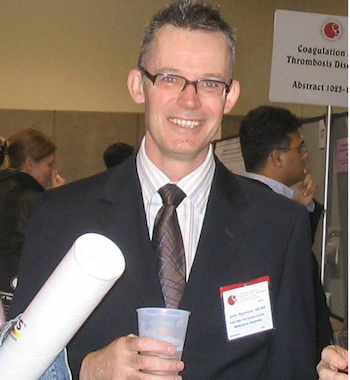
“None of the BTK inhibitors are approved in the frontline setting, and funding approval is only for one of either a BTK inhibitor or a BCL2 inhibitor in an individual patient’s lifetime, so there are substantial restrictions on how they’re used and the sequence in which they’re used, and the capacity to treat patients after time-limited therapy.
“We have some access and funding but it is less than current world’s best care would guide as to what ideally would be available to enable us to deliver optimal therapy, and no CAR-T therapy is funded or approved for CLL in Australia or anywhere else in the world,” said Prof. Seymour.
And he noted that CAR-T is an investigational therapy that, while promising, was “not yet a proven effective therapy” for CLL.
“And I’m not aware of any trial of CAR-T therapy that is currently recruiting for CLL in Australia, although there is a trial of chimeric antigen receptor natural killer cells (CAR-NK cells).”
Prof. Seymour made the point that “the particular repertoire of trials that are open and available does change with time”.
Can CLL be cured?
Prof. Seymour said the answer to that question “very much depends upon an individual patient’s circumstance; their age, their comorbidity, their personal goals and preferences, and the underlying biological nature of their CLL”.
And by biological nature, he referred to two characteristics. One was a patient’s immunoglobulin heavy chain variable region gene (IGVH) mutational status, with two broad categories.
“There’s hypermutated IGVH and that class of disease is generally prognostically more favourable. And as we’ll come to, a subgroup of those patients are potentially curable with chemoimmunotherapy.
The second biologic characteristic that’s critical is the status of their TP53 gene, and either deletion or mutation of that gene – the deletion of chromosome 17, or a somatic. This is an acquired mutation, not a germline inherited mutation, and an acquired mutation in the TP53 gene is highly unfavourable,” said Prof. Seymour.
“There’s a subgroup of patients with hypermutated IGVH and no abnormality of their TP53 status and that disease is potentially curable in 50-60% of patients, with relatively intensive FCR (fludarabine, cyclophosphamide, rituximab) chemoimmunotherapy.
“However, patients need to be young enough, eat enough, be well enough, and have adequate renal function to be considered for that chemoimmunotherapy approach, and that’s generally restricted to patients who are otherwise well and under the age of 65-70.
“Patients with favourable biology disease who are over that age, or with comorbidities, their disease is incurable unless they are fit enough to undergo allogeneic bone marrow transplant, but that’s a very intensive and arduous treatment associated with risks, including the potential for treatment-related mortality.
“In the presence of unfavourable biology or comorbidities or older age, and the inability to undergo allogeneic transplant, which together makes up the bulk of patients with CLL; that disease is incurable.”
Prof. Seymour said it was important for people to understand that incurable does not necessarily mean that their disease will cause their death.
“Many patients will have an incurable form of CLL but one that is managed and controlled and treated, and they have a very good quality of life, and ultimately they may die from other diseases with their CLL still present.”
“So incurable does not necessarily mean that the CLL will inevitably cause somebody’s death, but it is a disease that needs long-term management and a controlled approach in some patients,” he said.
Immunotherapy as a cure for CLL
“We’ve known for about 30 years that allogeneic bone marrow transplant (alloBMT) – the original form of immunotherapy – is able to cure CLL,” said Prof. Seymour.
“The intensity and the complications, or potential complications, of that treatment mean it is largely restricted to patients under the age of 70-75 who are fit and well, but that proves that immune approaches to therapy have the potential to cure CLL.
“Some of the exciting elements of CAR-T are that while having its own toxicities that are not trivial, it is generally a better tolerated treatment and can be delivered to a wider range of patients than alloBMT.
“In other diseases, it has shown a clear curative potential. If that curative potential was confirmed in CLL, and longer follow-up of current trials are necessary to clarify whether that is or isn’t the case, then that would open the prospect of a better tolerated, potentially curative treatment for CLL,” he said.
“A difficulty is that the quality of CAR-T therapeutic cells generated from patients with CLL is often impaired. This is because their own T-cells are compromised by the disease itself, and many of our therapies that are very effective against the CLL, can also compromise the number and quality of T-cells in patients.
“So a real challenge is how to balance effective treatment for CLL while still protecting the quality and quantity of patients’ T-cells within their own immune system.
“That will become a more pressing issue if CAR-T-cells are proven to be an effective therapy in CLL and then applied more widely, because we’ll need to protect the quality of patients T-cells to keep open the potential to harvest those cells in the future.
“Some of the trials that are ongoing globally are looking at the combination of particular T-cell augmenting therapies together with CAR-T or preceding CAR-T to try and address that compromised number and function of T-cells that’s relatively specific to patients with CLL,” Prof. Seymour explained.
Mutations in CLL and genomic testing
There are two broad categories of mutations in CLL.
“One is assessing the immunoglobulin heavy chain variable region (IGVH) into dichotomous mutated, which is favourable, or unmutated, which is less favourable,” explained Prof. Seymour.
“This characteristic is invariant; it does not change in a CLL patient throughout their entire course of their disease, so testing it on one occasion is all that is required.
“The major role of this is to determine the potential beneficial role of chemoimmunotherapy, which has the greatest benefit in patients with hypermutated IGVH status; whether that’s with curative intent with FCR, or with the non-curative but potentially durable benefit of less intensive chemotherapy.
“The second element of mutation testing looks at specific acquired mutations in individual genes within the CLL cells, and, as mentioned, the most important of those is the TP53 gene, which identifies a group of patients where chemoimmunotherapy is of negligible benefit and should be avoided, and targeted therapies are very strongly preferred,” he said.
The presence of p53 is checked prior to each new course of treatment, because, unlike the IGVH mutational status, individual mutations in these genes can and do change over time and can be acquired through the natural course of the patient’s disease.
“There are other mutations in genes, such as ATM, SF3B1, NOTCH1, BIRC3, and a long list of other genes that have some less dramatic impact upon the natural course of the disease,” said Prof. Seymour.
“And there are particular characteristics of whether the disease tends to be present with predominantly lymph node enlargement or with a higher white cell count, whether the disease will tend to grow back faster after time-limited treatment with venetoclax, whether there’s a slightly greater or slightly lesser risk of transformation (Richter’s transformation to diffuse large B-cell lymphoma). These mutational profiles influence those more subtle characteristics of the behaviour and disease biology of CLL.
“But the most critical one is determining the TP53 mutational status, and that needs to be checked prior to each episode of initiation of treatment because unlike the IGVH mutational status, individual mutations in these genes can and do change over time and can be acquired through the natural course of the patient’s disease.”
Genomic testing is used to identify mutations and Prof. Seymour said another way genetic characteristics of CLL can be assessed is with cytogenetics.
“Another influential factor on the favourable or unfavourable behaviour of the disease is the complexity – the number of abnormalities present on the chromosomal analysis – called complex karyotype or genomic complexity, where the higher number of abnormalities identifies a group of patients with a less favourable disease biology.”
Optimal Care Plan for CLL
Prof. Seymour chairs the working group for the development of a new Optimal Care Pathway (OCP) for CLL – a high-level roadmap that guides clinicians, patients, and healthcare services around the broad areas that should be a part of the treatment journey for CLL patients.
OCPs for many other cancers and haematologic malignancies (AML, HL & DLBC lymphomas) are available.
“These provide points of assessment and inform health services around the scope of resources such as clinical psychology, nutritional support, and access to genomic testing regarding suitability for bone marrow transplant, etc.,” said Prof. Seymour.
“The optimal care pathway for CLL has been developed with very broad multi-stakeholder input and is now going through the public consultation process.
“Soon, it will be ratified by the required state and federal governmental health departments to enable it to be disseminated, hopefully this year,” he said.
“Once an OCP is ratified it has three forms; the detailed primary document, a patient information guide, and a general practice guide, and these are all publicly available through the Victorian Cancer Council website.”
Blood Cancer Taskforce
Prof. Seymour is also the co-chair of the Blood Cancer Taskforce which he describes as “a very important initiative that brings together all of the stakeholders in the blood cancer field”.
“The Taskforce has developed a very important long-term National Strategic Action Plan for Blood Cancer, aiming to avoid preventable deaths from blood cancer between now and 2035,” he said.
“This has the potential to dramatically improve the quality and consistency of delivery of care for people with blood cancers across the nation.
“Also, to accelerate the availability of new therapies and to ensure their consistent and equitable access to patients across the country, no matter their postcode or financial status or other socioeconomic inequities, and to accelerate the research program to move forward our current standards of care.
“There has been excellent progress to date, with support from the Federal government and a number of the early initiatives, such as the optimal care plans which have been supported and developed. The next tranche of activity will focus on development of diagnostic and care guidelines, which will then be distributed widely.”
To conclude this discussion, Prof. Seymour shared his holy grail as a clinician/researcher, which is “to develop, have widely available, and to safely administer highly effective and well tolerated treatments for all of our blood cancers, and to ultimately prolong and improve the survival and ideally to cure patients from these often extremely aggressive or debilitating malignancies”.
Last updated on January 3rd, 2023
Developed by the Leukaemia Foundation in consultation with people living with a blood cancer, Leukaemia Foundation support staff, haematology nursing staff and/or Australian clinical haematologists. This content is provided for information purposes only and we urge you to always seek advice from a registered health care professional for diagnosis, treatment and answers to your medical questions, including the suitability of a particular therapy, service, product or treatment in your circumstances. The Leukaemia Foundation shall not bear any liability for any person relying on the materials contained on this website.